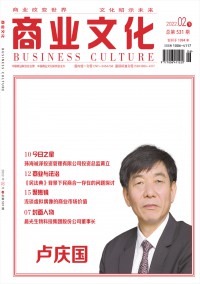商业计划书
前言:想要写出一篇令人眼前一亮的文章吗?我们特意为您整理了5篇商业计划书范文,相信会为您的写作带来帮助,发现更多的写作思路和灵感。

商业计划书范文第1篇
合同编号:
委托方(甲方):
受托方(乙方):
经双方协商一致,签订本合同。甲方委托乙方实施以下项目,并支付项目报酬。
1. 项目名称:
2. 服务内容:(商业计划书撰写、投融资咨询、企业管理咨询)
3. 实施地点:(在甲方地点办公、在乙方地点办公、甲方与乙方地点相互结合办公)
4. 项目报酬:总额(大写)人民币 万 千 百元;(小写)rmb¥ 元。
一、履行责任甲方履行责任:
1.签订合同前对项目报酬的确认;
2.项目实施过程中提供乙方要求的相关资料;
3. 项目实施过程中积极与乙方沟通协作;
4.项目实施过程中 如在甲方地点办公则有必要提供乙方要求的工作条件并支付相关费用;
5. 项目实施第一期、第二期和第三期按协议规定金额和方式支付项目报酬。
乙方履行责任:
1.签订合同前对项目报酬的确认;
2.项目实施过程中对甲方项目资料的接收与要求完善资料;
3. 项目具体实施和客户资料的保密;
4. 项目实施过程中积极与甲方进行至少三次的沟通协作;
5. 按照协议规定方式、时间交付项目结果;
6. 向甲方提供项目结果打印版一份(a4纸大小)、电子版一份 (1.5英寸磁盘或刻录为光盘);
7. 在合同签订三个月内负责项目的电子版修改(不包括框架性修改)、咨询和 项目答疑。
二、项目实施流程细则
1. 甲方阅读乙方的保密承诺并向乙方提供项目所需资料;
2.????年?? 月?? 日签订协议,在3日内向乙方支付第一期款项;
3. 乙方与甲方沟通联系,甲方继续向乙方提供项目所需资料已促成早日完成不带格式的初稿;
4. 乙方与甲方沟通联系, 并在 个工作日之内完成计划书初稿(收到订金时开始计算);
5. 乙方向甲方以电子邮件的形式递交不带格式的初稿(用时一天);
6. 乙方与甲方沟通联系,在 个工作日之内完成带格式的完整版商业计划书(收到第二期款项时开始计算);
7. 乙方向甲方以电子邮件的形式递交带格式的完整版商业计划书(用时一天);
8. 乙方向甲方以邮寄或当面递交形式提供项目结果的打印版一份(a4纸大小)、电子版一份(1.5英寸磁盘或刻录为光盘);
9. 在合同签订三个月内负责项目的电子版修改(不包括框架性修改)、咨询和项目答疑。
三、款项支付(商业计划书撰写项目)
1. 双方签约时甲方需支付第一期 元款项,项目报酬总额的50%;
2. 乙方递交不带格式的商业计划书中文版初稿,同时甲方支付第二期 元款项,项目报酬总额的40%;
3. 乙方递交带格式的完整商业计划书中文版,同时甲方支付第三期 元款项,项目报酬总额的10%.
四、违约条款
1.甲方必须及时提供项目所需的资料,若出现问题而使乙方延误项目的交付或导致不能完成,甲方承担后果;
2.乙方按照项目实施流程执行,若无故拖延交付项目结果时间应承担后果并赔偿委托方经济损失 ;
3.若甲方不按协议规定时间方式付款、提供相关资料,乙方有权终止履行合同。
五、项目撰写标准一)商业计划书项目
1. 包括但不限于以下内容:
? 第一章:执行概要;
? 第二章:商业模式、产品或服务;
? 第三章:盈利模式;
? 第四章:市场机会;
? 第五章:营销策略;
? 第六章:技术策略;
? 第七章:竞争优势、风险分析、政策分析;
? 第八章:运营管理、管理团队、社会责任;
? 第九章:财务分析和融资;
? 第十章:附件。
2. 结构明确、条理清晰,符合商业计划书的撰写惯例。
3. 错别字发生比例不大于千分之一。
1)投资咨询项目(根据甲方具体目的和标准详细协商后制定)
2)管理咨询项目(根据甲方具体目的和标准详细协商后制定)
六、协议纠纷的解决方式协议若发生纠纷与争议,双方首先通过友好协商解决,其次是仲裁解决,最后是诉诸法院。
七、其它条款
1.本协议自签订之日起生效,可以传真形式盖章和签字,但需附上签字人的身份证;
2.如有未尽事宜,双方可以做出补充规定,并以书面形式确定为附件;
3. 本协议壹式贰份双方各执壹份,从签订之日起生效,有效期3个月。
4. 甲乙双方联系人:
甲方主要代表: 电话: 电子信箱:
乙方项目经理: 电话: 电子信箱:
委托方:(甲方盖章)
法人:(签字)
代表:(签字)
开户银行:
帐号:
地址:
邮政编码:
电话:
电子信箱:
年 月 日
受托方:(乙方盖章)
法人:(签字)
项目经理:(签字)
开户银行:
帐号:
地址:
邮政编码:
电话:
商业计划书范文第2篇
地 址
电 话
传 真
电子邮件
联 系 人
第一部分 项目的核心技术
(一)核心技术和产品的描述 (主要介绍拟投资的技术和产品的先进性和独特性)
______(略)
(二)简述产品的生产制造过程、工艺流程
______(略)
(三)技术持有属性(专利、专有技术、配方、品牌、销售网络、许可证、专营权、特许权经营等。)
______(略)
(四)核心技术的来源(自主开发、合作开发)
______(略)
(五)技术开发的合作对象与方式
______(略)
(六)技术鉴定和获奖情况(包括技术鉴定情况、获国际、国家、省、市及有关部门和机构奖励情况)
______(略)
(七)公司现有的和正在申请的知识产权(专利、商标、版权等)
______(略)
(八)请说明有关知识产权转让或授权许可的协议
______(略)
(九)产品毛利润率是多少?纯利润率是多少
______(略)
(十)技术和产品的竞争优势
______(略)
(十一)公司是否与掌握公司关键技术及其它重要信息的人员签定竞业禁止协议,若有,请说明协议主要内容
______(略)
(十二)请说明,公司对知识产权、技术秘密和商业秘密的保护措施
______(略)
第二部分 市场潜力和收入模式
(一)目标市场(新技术和产品应用的领域)
______(略)
(二)行业情况(行业发展历史及趋势,哪些行业的变化对产品利润、利润率影响较大,进入该行业的技术壁垒、贸易壁垒、政策限制等)
______(略)
(三)市场销售有无行业管制,公司产品进入市场的难度分析
______(略)
(四)市场潜力(市场规模、市场前景及增长趋势分析)
______(略)
公司在过去3 至 5年的时间里,每年的全行业销售总额:(一定要列明资料来源。)(万元)
列出表格,单位为(万),列出每年的销售收入,销售增长率。
未来3 ~5 年各年全行业销售收入预测:(一定要列明资料来源。)
单位为(万),列出年份,公司销售收入和收入模式
第三部分 主要管理者
列出主要董事会成员名单,可以使用表格。分别列出:序号、职务、姓名、工作、单位等。并根据第个成员单独列出一份表格。
董事长
姓名_____________性别_____________年龄_____________籍贯______________
学历_____________学位____________所学专业__________职称______________
毕业院校____________________户口所在地____________联系电话___________
主要经历和业绩:(着重描述在本行业内的技术和管理经验和成功事例,与技术发明人及持有人的关系。)
____(略)
总经理
姓名_____________性别_____________年龄_____________籍贯______________
学历_____________学位____________所学专业__________职称______________
毕业院校____________________户口所在地____________联系电话___________
主要经历和业绩:(着重描述在本行业内的技术和管理经验和成功事例,与技术发明人及持有人的关系。)
____(略)
主要技术开发人员(一)
姓名_____________性别_____________年龄_____________籍贯______________
学历_____________学位____________所学专业__________职称______________
毕业院校____________________户口所在地____________联系电话___________
主要经历和业绩:(着重描述在本行业内的技术水平、经验和成功事例,与技术发明人及持有人的关系。)
____(略)
主要技术开发人员(二)
姓名_____________性别_____________年龄_____________籍贯______________
学历_____________学位____________所学专业__________职称______________
毕业院校____________________户口所在地____________联系电话___________
主要经历和业绩:(着重描述在本行业内的技术水平、经验和成功事例,与技术发明人及持有人的关系。)
____(略)
其他对公司发展负有重要责任的人员(一)
姓名_____________性别_____________年龄_____________籍贯______________
学历_____________学位____________所学专业____________________________
毕业院校____________________户口所在地____________联系电话___________
主要经历和业绩:(根据公司的需要,来描述不同人员在特定方面的专长,与技术发明人及持有人的关系)
____(略)
其他对公司发展负有重要责任的人员(二)
姓名_____________性别_____________年龄_____________籍贯______________
学历_____________学位____________所学专业____________________________
毕业院校____________________户口所在地____________联系电话___________
主要经历和业绩:(根据公司的需要,来描述不同人员在特定方面的专长,与技术发明人及持有人的关系。)
____(略)
公司董事和主要管理人员之间有无亲属关系
____(略)
请说明公司是否存在关联经营和家族管理问题
____(略)
请说明公司董事、管理者与关键雇员之间是否有实际
存在或潜在的利益冲突
____(略)
第四部分 公司基本情况
公司成立时间_________________________公司性质 ______________________
注册资本____________________________ 实际到位资本____________________
其中现金到位________________________ 无形资产占股份比例____________%
注册地点_____________________________________________________________
主营业务为_________________________________________________________。
公司改革:(说明自公司成立以来主营业务、股权、注册资本等公司基本情形的变动,并说明这些变动的原因。)
____(略)
目前公司主要股东情况:(列表说明目前股东的名称及其出资情况。)
如:股东名称、出资额、出资形式、股份比例、联系人、联系电话。
目前公司内部部门设置情况:以组织机构图来表示。
公司目前职工情况:
如:员工人数、大学以上文化程度、硕士、博士、研究生等所占的人数和比例。通过表格的形式来展现。
公司经营财务历史:(销售收入、毛利润、纯利润)
(单位:万元)
项 目本年度前1年
销售收入:
毛 利 润:
纯 利 润:
总 资 产:
总 负 债:
净 资 产:
第五部分 竞争对手
公司的竞争优势说明(成本、价格、性能、品牌、销售渠道)
____(略)
公司产品销售成本的构成及销售价格制订的依据
____(略)
公司在产品销售价格方面的策略与实施
____(略)
进货渠道的稳定性、可靠性、质量及进货周期
____(略)
公司的主要供应商
主要供应商
1__________________________________________________________
主要供应商
2__________________________________________________________
主要供应商
3__________________________________________________________
本公司与行业内五个主要竞争对手的比较:(主要描述在主要销售市场中的竞争对手。)
竞争对手市场份额竞争优势竞争劣势
本公司
公司在技术与产品开发方面的国内外竞争对手(5家)基本情况
竞争对手(一)
____(略)
竞争对手(二)
____(略)
竞争对手(三)
____(略)
竞争对手(四)
____(略)
竞争对手(五)
____(略)
公司为提高竞争力拟采取的措施。
____(略)
第六部分 融资说明
资金需求量
____(略)
请说明投入资金的用途
____(略)
需要几个投资方,各投资方出资额和所占股权比例
____(略)
投资方可享有哪些监督和管理权力
____(略)
如果公司没有实现项目发展计划,公司与管理层向投资方承担哪些责任?
____(略)
投资方以何种方式收回投资,具体方式和执行时间
____(略)
需要对投资方说明的其它情况
____(略)
第七部分 经营计划
未来三年技术开发重点
____(略)
融资后第一年研发资金(购置技术开发设备、开发人员工资、试验检测费用、其他研发费用)
____(略)
公司未来3 ~ 5年在研发资金投入和人员投入计划(万元)
年 份第1年第2年第3年第4年第5年
资金投入
人员(个)
公司未来3 ~ 5年的销售收入预测
(万元)
年 份第1年第2年第3年第4年第5年
销售收入
市场份额
融资后各年陆续设立哪些机构,各机构配备多少人员,人员年收入情况。请用图表统计表示出来。
公司对管理层及关键人员将采取怎样的激励机制
____(略)
公司是否考虑员工持股问题,请说明
____(略)
请提供:
融资后第一年财务预算
未来3 ~ 5年项目现金流量表
未来3 ~ 5年项目损益表
未来3 ~ 5年项目销售计划表
未来3 ~ 5年项目产品成本表
第八部分 风险控制
请详细说明该项目实施过程中可能遇到的风险(包括政策风险、加入wto的风险、技术开发风险、经营管理风险、市场开拓风险、生产风险、财务风险、汇率风险、投资风险、股票风险、对公司关键人员依赖的风险等。以上风险如适用,每项要单独叙述控制和防范手段)
____(略)
企业应备资料清单
1.营业执照
2.公司章程
3.验资审计
报告
4.税务登记证
5.财务报表(上年度、本年度、本月)
6.专利证书、鉴定报告
7.高新技术企业、高新技术项目证书
8.其它表明企业特点的资料
9.商业计划书
保 密 承 诺
本商业计划书内容涉及本公司商业秘密,仅对有投资意向的投资者公开。本公司要求投资公司项目经理收到本商业计划书时做出以下承诺:
妥善保管本商业计划书,未经本公司同意,不得向第三方公开本商业计划书涉及的本公司的商业秘密。
商业计划书范文第3篇
Your business plan is very often the first impression potential investors get about your venture. But even if you have a great product, team, and customers, it could also be the last impression the investor gets if you make any of these avoidable mistakes.
INVESTORS see thousands of business plans each year, even in this down market. Apart from a referral from a trusted source, the business plan is the only basis they have for deciding whether or not to invite an entrepreneur to their offices for an initial meeting.
With so many opportunities, most investors simply focus on finding reasons to say no. They reason that entrepreneurs who know what they are doing will not make fundamental mistakes. Every mistake counts against you.
This article shows you how to avoid the most common errors found in business plans.
Content Mistakes
Failing to relate to a true pain
Pain comes in many flavors: my computer network keeps crashing; my accounts receivable cycle is too long; existing treatments for a medical condition are ineffective; my tax returns are too hard to prepare. Businesses and consumers pay good money to make pain go away.
You are in business to get paid for making pain go away.
Pain, in this setting, is synonymous with market opportunity. The greater the pain, the more widespread the pain, and the better your product is at alleviating the pain, the greater your market potential.
A well written business plan places the solution firmly in the context of the problem being solved.
Value inflation
Phrases like "unparalleled in the industry;" "unique and limited opportunity;" or "superb returns with limited capital investment" - taken from actual documents - are nothing but assertions and hype.
Investors will judge these factors for themselves. Lay out the facts - the problem, your solution, the market size, how you will sell it, and how you will stay ahead of competitors - and lay off the hype.
Trying to be all things to all people
Many early-stage companies believe that more is better. They explain how their product can be applied to multiple, very different markets, or they devise a complex suite of products to bring to a market.
Most investors prefer to see a more focused strategy, especially for very early stage companies: a single, superior product that solves a troublesome problem in a single, large market that will be sold through a single, proven distribution strategy.
That is not to say that additional products, applications, markets, and distribution channels should be discarded - instead, they should be used to enrich and support the highly focused core strategy.
You need to hold the story together with a strong, compelling core thread. Identify that, and let the rest be supporting characters.
No go-to-market strategy
Business plans that fail to explain the sales, marketing, and distribution strategy are doomed.
The key questions that must be answered are: who will buy it, why, and most importantly, how will you get it to them
You must explain how you have already generated customer interest, obtained pre-orders, or better yet, made actual sales - and describe how you will leverage this experience through a cost-effective go-to-market strategy.
"We have no competition"
No matter what you may think, you have competitors. Maybe not a direct competitor - in the sense of a company offering an identical solution - but at least a substitute. Fingers are a substitute for a spoon. First class mail is a substitute for e-mail. A coronary bypass is a substitute for an angioplasty.
Competitors, simply stated, consist of everybody pursuing the same customer dollars.
To say that you have no competition is one of the fastest ways you can get your plan tossed - investors will conclude that you do not have a full understanding of your market.
The "Competition" section of your business plan is your opportunity to showcase your relative strengths against direct competitors, indirect competitors, and substitutes.
Besides, having competitors is a good thing. It shows investors that a real market exists.
Too long
Investors are very busy, and do not have the time to read long business plans. They also favor entrepreneurs who demonstrate the ability to convey the most important elements of a complex idea with an economy of words.
An ideal executive summary is no more than 1-3 pages. An ideal business plan is 20-30 pages (and most investors prefer the lower end of this range).
Remember, the primary purpose of a fund-raising business plan is to motivate the investor to pick up the phone and invite you to an in-person meeting. It is not intended to describe every last detail.
Document the details elsewhere: in your operating plan, R&D plan, marketing plan, white papers, etc.
Too technical
Business plans - especially those authored by people with scientific backgrounds - are often packed with too many technical details and scientific jargon.
Initially, investors are interested in your technology only in terms of how it:
solves a really big problem that people will pay for;
is significantly better than competing solutions;
can be protected through patents or other means; and
can be implemented on a reason-able budget.
All of these questions can be answered without a highly technical discussion of how your product works. The details will be reviewed by experts during the due diligence process.
Keep the business plan simple. Document the technical details in separate white papers.
No risk analysis
商业计划书范文第4篇
Billion Team International Investment Ltd.
Unit I 3/F
Good Harvest Ctr 33 On Chuen St. Fanling
Hongkong
0852 26826421
(86)027 87389766
[Your Name]
[DATE]
TABLE OF CONTENTS
Executive Summary..........................
Management..................................
[Company] History...........................
[Product/Service] Description.............
Objectives..................................
Competitors................................
Competitive Advantages...................
Innovation..................................
Pricing..................................
Specific Markets..................................
Growth Strategy....................................
Market Size and Share..........................
Targeting New Markets.......................
Location..................................
Manufacturing Plan................................
Research & Development......................
Historical Financial Data........................
Proforma Financial Data.........................
Proforma Balance Sheet.........................
Cost Control..................................
Effects of Loan or Investment...............
Attachments..................................
Executive Summary
[My Company] was formed as a [proprietorship, partnership, corporation] in [Month, Year] in [City, State], by [John Doe] in response to the following market conditions:
[Startup, growth] opportunities exist in [Product/Service].
The need for use of efficient distribution and financial methods in these overlooked markets.
[I/We] have several customers who are willing to place large [orders,contracts] within the next three months.
Several other prospective [customers/clients] have expressed serious interest in doing business within six months.
[I/We] previously owned a company that was active in the widget markets. Over the past few years I spent much time studying ways to improve overall performance and increase profits. This plan is a result of that study.
The basic components of this plan are:
<Product>
1. Competitive pricing
2. Expand the markets
3. Increased advertising
4. Lower our unit costs,
5. Thereby achieving higher profits.
<Service>
1. Sign contracts
2. Increased advertising
3. Increase office staff
To this end, [I/we] need investment from private individuals and/or companies. A total of $XXX is being raised which will be used to finance working capital, plant and equipment. The company will be incorporated and common stock issued to investors. The company will be run as a [proprietorship, partnership, corporation].
Financial Goals
Year 1
Year 2
Year 3
Sales
$1,000,000
$1,400,000
$1,600,000
Net Income
$25,000
$250,000
$375,000
Earnings per share
.01
.12
.14
Management
[Name]
[Title]
[Experience]
Sales growth from zero to $1,000,000 in five years.
Led market in market share - 30%.
Formulated advertising budgets & campaigns.
Pioneered new distribution channels.
Established national sales force.
Established national repair & service centers.
Brought new and innovative products to the market.
Designed point-of-purchase materials.
[Education}
University of Boston
Boston, MA
B.A. - Computer Sciences
Short Biographies
President
John Q. Doe, Chief Executive Officer, and Director since February 1988 and President since January 1990. Mr. Doe was the founder and Chief Executive Officer of the original operating company known as Random Excess, Inc. He has had experience in the widget field with his own firm, John Doe Co., of Oshkosh (Wisconsin), from 1980 to 1987. This firm was sold to FatCat Widgets, Inc. in 1987. Mr. Doe has held a sales position with U S West Inc. since then. Mr. Doe graduated from the University of Colorado in 1981 with a bachelor’s degree in philosophy. Mr. Doe is employed by the Company on a full-time basis.
Chief Financial Officer
Richard Roe, CPA, Chief Financial Officer, Treasurer and Director. Mr. Roe joined Random Excess, Inc. in December 1988 as a corporate controller and was named Chief Financial Officer in July 1989. Mr. Roe was appointed Treasurer and a Director in July 1990. He served as corporate controller of XYZ Lumber Company from August 1981 to December 1988. Mr. Roe graduated from Metropolitan State College in Denver, Colorado in 1976 with a bachelor’s degree in accounting. Since 1979 he has been licensed as a Certified Public Accountant in the State of Colorado and is a member of the American Institute of Certified Public Accountants. Mr. Roe is employed by the Company on a full-time basis.
Vice President
Joe Dokes, Secretary, Executive Vice President and Director. Mr. Dokes supervises the company’s sales and implementations to its largest corporate customers, including US West, Great West Life Insurance, etc. Mr. Dokes has served as Secretary and a Director since February 1988, Vice President of Operations from February 1988 to December 1988, President of the Company from December 1988 to January 1990 and Vice President of Contract Sales since January 1990. He has been involved since 1986 with the private company originally formed as Random Excess, Inc., where his duties included managing the purchasing and sales department. From November 1984 to May 1986 he managed the sales department at Integrated Management Systems, Inc. From June 1983 to October 1984 he was a buyer for Adams County, Colorado, School District 50. Mr. Dokes attended Oklahoma State University in 1980 and 1981 and Trinidad State College in Trinidad, Colorado in 1981 and 1982. He did not receive a degree from either university. Mr. Dokes is employed by the Company on a full-time basis.
Vice President
Sally Seaugh Vice President of Marketing. Ms. Seaugh has been the Company’s Vice President of Marketing since November 1988. From September 1986 to October 1988 she was involved in business development and marketing for United Bank of Aurora (Colorado). From February 1980 to August 1986 she was self-employed as an independent oil and gas landman. Ms. Seaugh graduated from the University of Denver in 1974 with a bachelor’s degree in Education. She is employed by the Company on a full-time basis.
Responsibilities
John Q. Doe, Chief Executive Officer - Responsible for entire operation. Oversees management function and all other executives.
Salary - $60,000.
Richard Roe, CPA, Chief Financial Officer - Responsible for financial operations, accounts payable, accounts receivable, interaction with auditors, investor relations. Salary - $40,000
Joe Dokes, Executive Vice President - Responsible primarily for sales and sales support.
Salary - $35,000
Sally Seaugh Vice President of Marketing. Responsible for marketing, human resources and training.
Salary - $30,000.
Total Executive Compensation
$165,000.
[This Page is for an Organization Chart, if applicable.]
[Company] History
In [Month, Year] [I/we] formed a [Product/Service] company that manufactured start-of-the-art complex widgetry. This company was located in [City, State]. [I/we] formed this company as a [proprietorship, partnership, corporation]. Others involved in this business were: [names].
The main goal of this company was to [explain].
Financing was arranged through [home equity loans, savings, venture capital, friends and family, etc.] [Explain terms, rates and ability to repay.]
This venture was very successful in generating and increasing sales, but was not effective in achieving profitability. The main reason for this was the amount of actual overhead experienced. This overhead was not initially anticipated by me at the beginning of that venture. Items including credit checking, warranty program management, extensive travel, maintaining warehouse stock and the management and expense of a national sales force were expenses not originally forecast or expected. With this level of overhead, it was mathematically impossible to achieve profitability.
or:
This venture was very successful in generating and increasing sales, as well as effective in achieving profitability. This was due to the following reasons:
[Reason 1}
[Reason 2]
[Reason 3]
OR:
商业计划书范文第5篇
公司内训商业计划书范文
一、培训需求分析
进行培训需求分析是培训项目设计的第一步,对许多的管理层来说,培训工作“既重要又茫然”,根本的问题在于企业对自身的培训需求不明确但又意识到培训的重要性。因此我们必须对培训进行需求的制定,将本企业发展目标和员工的生涯设计相结合来仔细设计和主动加强对员工的培训。需要注意的一点是:培训是为满足管理者的需要和工作任务的需要,
不是单纯为满足员工需要!下面主要从三个方面来分析培训的需求:
企业分析:众所周知,公司自创办以来发展迅速,尤其是今年八月聚合和长丝开车后,公司的规模更是上了一个大的台阶,年产值超过20个亿,已经成为了国内的大型化纤供应商。由此可见,从规模产值上看我们公司已经是一个大公司、大集团了,然而由于公司的发展速度太快,以致于产生了一种发展的不平衡,也就是公司的相关的配套(如相关制度、人员的素质等)和公司的规模产值发展不平衡。尤其是我们公司的基层管理人员的素质更是和我们的要求相距太远,因此,从公司的角度分析对这些基层的管理人员的培训是一个迫切的要求。
任务分析:如今我们公司的基层管理人员所需承担的任务相当重要,不仅包括生产的有效管理、人员合理调配、员工的绩效考核等,还包括要传达公司上层的政策,宣扬公司的企业文化等任务。然而,这些任务的有效完成,仅靠我们公司现有的基层管理人员的素质和水平是远远不能达到的。因此,公司各项任务的顺利完成,基层管理人员素质的提高就成了一个关键的因素。
人员分析:通过对我们公司现有基层管理人员情况的了解和调查,可知我们公司的基层管理人员具有以下特点:
1、整体的文化素质偏低,大多数基层管理人员只具有中专或高中文化,个别只具有初中文化
2、具有较为丰富的现场操作和管理的经验,我们的基层管理人员都是从基层的员工中提拔上来的,因此他们对于现场情况较为熟悉。
3、缺乏再学习的动力和激情,由于长期的工作的一成不变以及工作生活的单调乏味,导致我们的基层管理人员,失去了进一步提升的兴趣,或是单单有想法而已,却没有付之行动的毅力和恒心。
4、管理方法简单粗暴,由于本身的素质有限以及长期处于一个管理较为混乱的环境当中,因为他们的前任们几乎都是如此,于是在潜移默化之中就产生了恶性循环了。
由此可知,我们公司的基层管理人员很有必要进行培训,以提高他们各方面的素质,激发他们再学习的动力,把我们公司整体的管理水平提上来,是我们公司发展的大势所趋和迫切要求。
二、管理人员的培训目标
能力提高的目标:
1、能掌握基本事实(认知能力);
2、具备有关的专业知识;
3、对事物能持续保持有敏感的情感;
4、具备解决问题和作出决策的技巧;
5、具备社交能力;
6、具备控制情绪的能力;
7、有预警能力
8、有创意
9、思考敏锐
10、良好的学习习惯和技巧
11、有自我认知能力
通过培训主要培养以上这些能力,需要注意的是,不同的人员和不同的岗位的侧重点不同。
实际的量化目标:
1、 由于培训而导致的工作数量上的提高(如产量的完成量,或每天平均审议的工作申请数量)。
2、培训后工作质量的提高(如工作的货币成本、废料损失或错误数量)。
3、培训后工作及时性的改善(如达到时间安排要求的情况)。
4、作为培训结果的成本节约(如偏离预算情况、销售费用或成本费用)。
三、培训效果加强的措施
有效培训是多方积极参加的结果,培训要想充分有效地发挥更大的作用,那么最好能够对受训部门和受训员工进行以下三方面的培训前准备:
第一,在参加培训前,受训者应该知道自己希望从培训计划中获得什么?写出一个简单的期望并列出参加培训会对工作带来的好处;受训者可以根据这些期望目标有的放矢的参加培训;
第二,让所有受训员工知道参加培训并不仅是坐在教室里傻呆呆地听讲,而应该带着一些问题和设定一些目标,利用课堂内外的各种机会,积极地跟讲师和其他学员主动交流;
第三,参加培训后,应该要求受训人写一份员工培训报告,呈交主管审阅,并交人力资源部存档,并能与相关同事分享,探讨如何将学到的东西应用到实际工作中。这样一来,才能在较大程度上保证培训的质量,从而让培训工作为企业创造更多价值,也能够让培训评估能够有效地开展。
四、人力资源部的职责
人力资源部在培训的过程中的职责:
首先,安排好培训的各项准备工作,安排好培训的课程、时间、场所、参加
人员以及培训方法的选择等,这些都是影响我们培训效果的重要因素,课程和参
加人员的选择关系的到我们培训效果的针对性作用的大小。
其次,与培训方做好各方面的协调工作,在培训过程中,做好培训方和受训方的桥梁,提高培训的针对性和有效性,提高培训的效果。
再次,对培训活动的全程进行控制及调配,对于培训过程中出现的问题和情况进行适时的反馈,并及时做出有效的调整。
最后,对培训进行各项评估,包括培训效果的评估,培训方水平的评估等,这对于培训成果的巩固,让员工真正地从培训中学到于工作有用的东西。
企业内训的益处
一 快出人才,多出人才,出好人才。国内教育资源的限制和教育体制的缺陷,令企业只有依靠培训来获得优秀员工。
二 获得高昂的士气和战斗力。通过培训,可以直接,最彻底的满足员工的自尊,自我实现的需要,充分释放潜能,有效调动积极性。
三 减少员工的流动率和流失率,当员工无法有效的完成自己的工作时,就会形成工作压力,并在各方面表现出来。成功的培训能通过员工技能的提高,有效减少工作压力和增加工作乐趣,减少人员流动和流失,也有助于降低劳动力和管理成本。
四 更有效,容易的督导员工。当员工明白了工作性质,具备了工作能力,并有效的实施时,就会将“要我做”转化为“我要做”,减少经理对他们的管理和监督工作。
五 最大程度的降低成本。通过培训,改进员工工作表现,既可获得因人员素质的提高带来的实际效益,更可带来因员工主动性,积极性和创造性的激发所带来的巨大效益。
六 塑造更完美的企业文化。通过培训,员工会感激管理层为他们提供了使自己成长,发展和在工作中取得更大成就的机会,自然有效的增强企业对他们的向心力和凝聚力。
七 强化员工敬业精神。拥有正确心态和娴熟技巧的员工,自然的也具备了良好的敬业精神。而培训的一个主要的目的和效果也正是对心态的改进和技巧的强化。
八 保证顾客的最大满意,几乎没有一个营销计划能打败口碑式宣传,顾客能看出谁是训练有素的员工,也能分辨出没有经过训练的员工,他们会通过员工的工作表现来判断该企业的管理能力,并因此影响他们的购买决策,影响他们的口碑宣传。
九 更有利的胜过竞争对手,只要与对手相比时存在一些特定的优势,就能在激烈的市场竞争中赢得一席之地。而人员优势正是很多企业欠缺的。对一般企业而言,只要做出不多努力,就很容易实现自己的人员优势,胜过竞争对手,而培训正是获得人员优势的最好手段。
企业内训的意义
一、有效的企业培训,其实是提升企业综合竞争力的过程。事实上,培训的效果并不取决于受训者个人,而恰恰相反,企业组织本身作为一个有机体的状态,起着非常关键的作用。良好的培训对企业好处有四点:
2、培训能促进企业与员工、管理层与员工层的双向沟通,增强企业向心力和凝聚力,塑造优秀的企业文化。不少企业采取自己培训和委托培训的办法。这样做容易将培训融入企业文化,因为企业文化是企业的灵魂,它是一种以价值观为核心对全体
职工进行企业意识教育的微观文化体系。企业管理人员和员工认同企业文化,不仅会自觉学习掌握科技知识和技能,而且会增强主人翁意识、质量意识、创新意识。从而培养大家的敬业精神、革新精神和社会责任感,形成上上下下自学科技知识,自觉发明创造的良好氛围,企业的科技人才将茁壮成长,企业科技开发能力会明显增强。更多企业管理论文请在茅山下查找.


